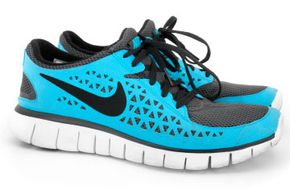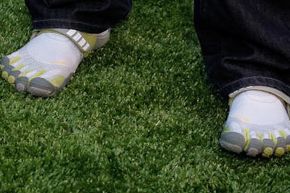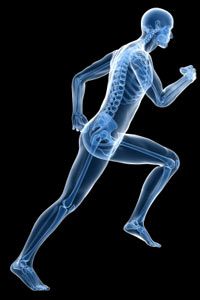Ah, to feel the sand between your toes, the wet grass on your feet. These two hallmarks of the good life imply that you can check your shoes at the door. A growing number of runners are taking up the mantra and trying barefoot running. Many more would join this crowd if it weren't for the fact that most of us don't live on a beach or in a perfect suburban lawn. Rocks hurt, pavement's unforgiving and the biting cold of winter can be flat-out dangerous.
Enter barefoot running shoes. Also called minimalist running shoes, this trendy footwear is more than a fad and has been catching the attention of people and companies inside and outside of athletics for a lot of reasons. But what are they, exactly? What are the benefits of using them? And do the benefits outweigh the risks? Bottom line, are they right for you?
Advertisement
Let's get one thing straight: Wearing a barefoot running shoe is not the same thing as running barefoot. Even the most minimalist footwear still changes the experience to some degree. The whole concept is to find the perfect harmony between the physical support of a traditional running shoe and the benefits of running barefoot. Any shoe that aspires to be compared to going barefoot should allow the same degree of flexibility to help you improve balance, provide plenty of feedback from the ground to watch for the pain that can precede injury, and yet still give the wearer a measure of protection from broken beer bottles and other hazards.
As of mid-2014, Interest in minimalist shoes seems to have peaked and experienced a drop in popularity. This shoe category makes up less than 5 percent of running shoe sales [source: Runner's World]. But paltry sales haven't dampened the enthusiasm of true barefoot believers. Keep reading and you'll see the different types of barefoot running shoes on the market.
Advertisement



